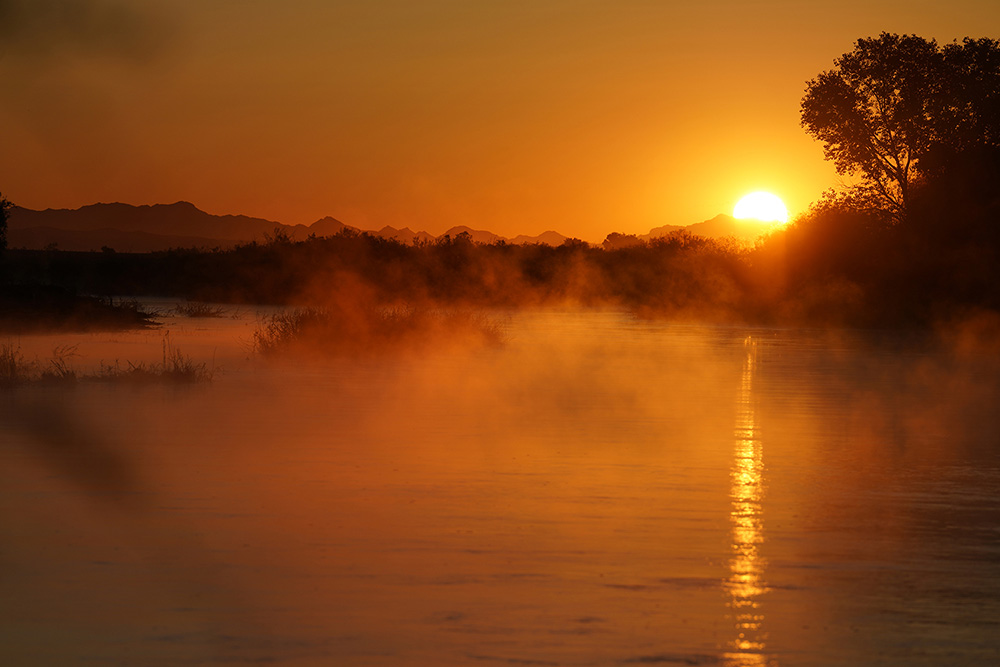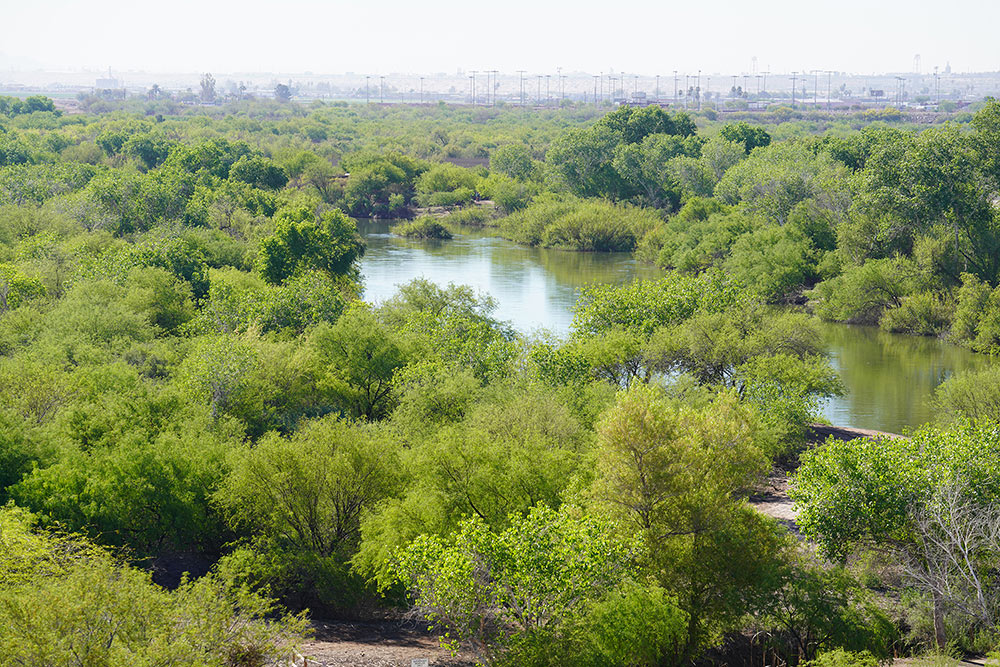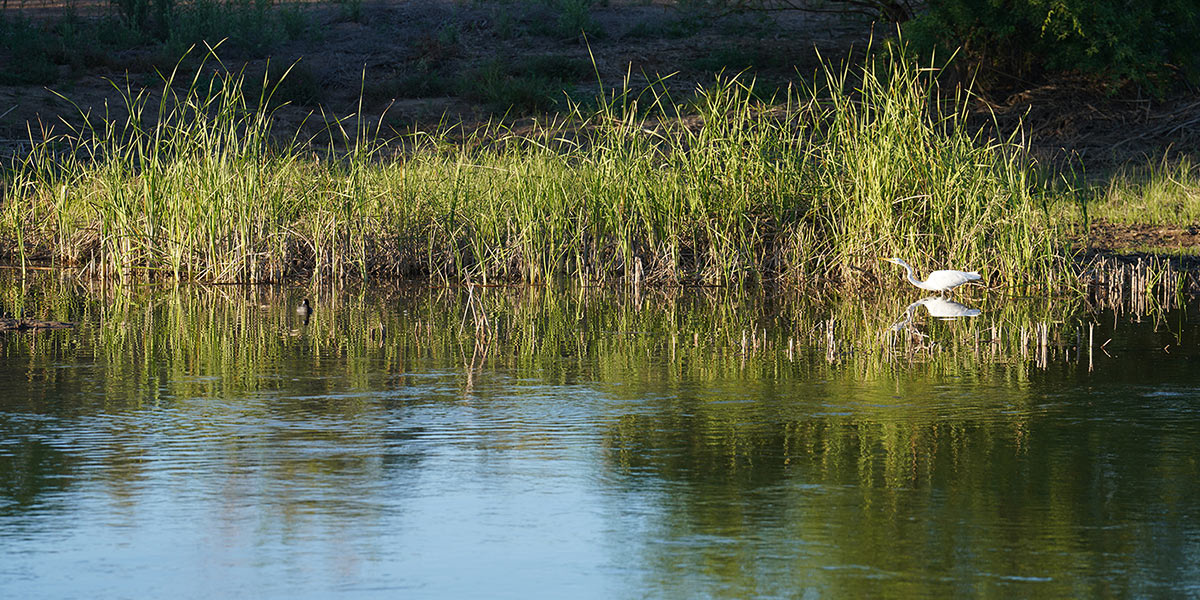The Multi-Species Conservation Program (MSCP) – an oasis on the lower Colorado River – turns 20 this month!
Started in 2005, this program was conceived in response to the growing number of species listed under the Endangered Species Act, notably the Humpback Chub, the Roundtail Chub and the Razorback Sucker, all endemic to the Colorado River.
Colorado River supplies are a critical source of water to more than 27 million people, supporting some of the most productive agricultural lands in the country, large metropolitan areas and tribal lands. Recognizing the environmental, economic and human value of the Colorado River, water managers from the lower basin states of Arizona, California and Nevada, as well as the Bureau of Reclamation, got to work. This unique federal/non-federal partnership that focuses on restoring and protecting habitat for a broad range of species, took almost a decade to form.
Central Arizona Project hosted a virtual oral history interview with several of the key players responsible for the MSCP concept, as well as those who are working on the project today:
- Perri Benemelis, consultant (previously with the Arizona Department of Water Resources)
- Chris Harris, Colorado River Board of California (now retired)
- Vineetha Kartha, Central Arizona Project (previously with the Arizona Department of Water Resources)
- Terry Murphy, Bureau of Reclamation (now retired)
- Seth Shanahan, Southern Nevada Water Authority
- Bob Snow, Solicitor’s Office, Department of the Interior (now retired)
- Justin Tade, Solicitor’s Office, Department of the Interior (now retired)
Signed in April 2005, MSCP is a 50-year program with a $626 million budget (adjusted for inflation). The objective is to create new and improve existing habitat to protect 27 species, including eight listed under the Endangered Species Act that are either threatened or endangered.
The MSCP is managed by the Bureau of Reclamation and aims to create a total of 8,312 acres of new habitat within the floodplain of the Lower Colorado River – including Cottonwood-Willow and Honey Mesquite. As of its 20th year, almost 7,000 acres of habitat have been created, including 5,940 acres of Cottonwood-Willow and 1,320 acres of Honey Mesquite. And we have seen results – species have already re-appeared and seem to be frequent visitors, including the Summer Tanger, Northern Mexican Garter Snake and Yellow-Billed Cuckoo.


In addition to Cottonwood-Willow and Honey Mesquite, MSCP also aims to create 568 acres of marsh and 484 acres of backwaters, which are habitat for fish populations. MSCP also aims to improve native fish populations by augmenting the native fish population by 1.2 million, including Razorback Suckers and Bonytail Chub. As of 2024, more than 400,000 native fish have been stocked in the Lower Colorado River. In the MSCP’s Reach 1, the Razorback Sucker population is the highest it has been since the early 2000s.
MSCP efforts not only create a more diverse ecosystem, it is a shining example of collaborative efforts that also have practical applications in terms of flood protection and recreation. The Yuma East wetlands, for example is a 380-acre wetland in Arizona that is a collaborative effort between the Quechan Tribe, City of Yuma, the Yuma Crossing Natural Heritage Area, the Arizona Game and Fish Commission and the MSCP. This area was previously overrun with non-native plant species and served as a dumping area. Now it has been converted to a mosaic of Cottonwood-Willow, Honey Mesquite and marsh that serves as a habitat for a multitude of species and as a recreational area for local residents and visitors.
Through the MSCP, we’re providing recreational opportunities, protecting our infrastructure and providing water security.
And that’s truly a win-win for everyone – birds, reptiles and fish included!
Watch the oral history →
Read the transcript →
View our infographic →
KRA: Stewardship & Sustainability
Serving as proactive leaders in sustainability and responsible, collaborative stewards of CAP’s Colorado River supply


